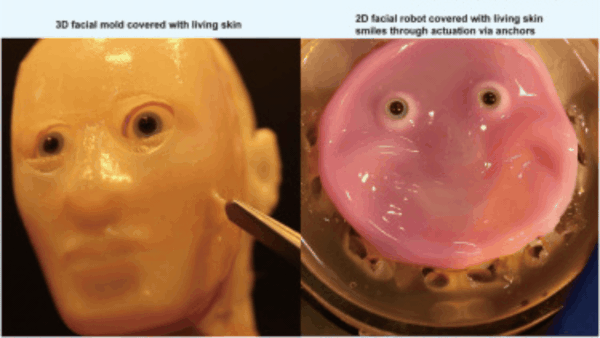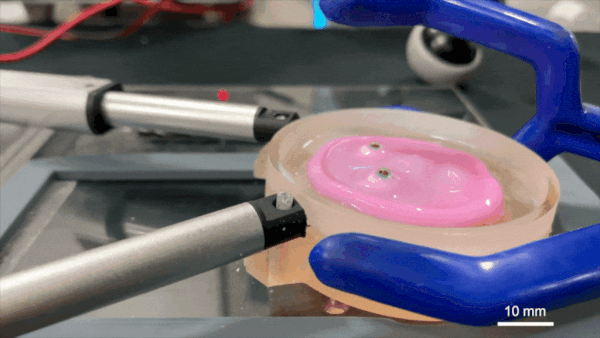A University of Tokyo doctor, Shoji Takeuchi, has developed a machine with “living body” that is gaining popular interest online. Takeuchi’s prior research on walking mini-robots made with 3D printed lab-grown meat, engineered epidermis, and natural muscle tissue expanded on Takeuchi’s earlier work on building a robot that looked like an alien. The alien-like machine was created using designed skin attached to a humanoid robot.
Takeuchi emphasized the need for better attachment between the skin’s mechanical functions and the abdominal structure. The researchers discovered a way to connect the skin to complicated structures by mimicking people skin-learned structures and using particularly made V-shaped perforations in solid materials. The body can walk without peeling or tearing because of its natural flexibility and solid adhesion to the robot.
Takeuchi said in a news release that” when I had previously researched a finger-shaped machine that was covered in engineered body muscle we grew in our test, I felt the need for better attachment between the mechanical features and the abdominal construction of the epidermis.”
We discovered a way to bind the skin to complicated structures by mimicking people skin-lbow structures and using particularly made V-shaped perforations in solid materials, he added.
The researches published the results of their research in the book Cell Reports Physical Science, which included a 2D design with a more human-like head shape and a 3D type with a more human-like head design.

The second problem is to thicken the skin and add features like lines to make it more human-like. Takeuchi believes that incorporating sweat glands, oily cells, pores, blood vessels, large, and emotions can help attain a thicker and more practical body.
” Of course, activity is also a critical factor, not just the material, but another critical challenge is creating admiring expressions by integrating advanced actuators, or muscles, inside the robot”, he said.
These human- like living skin robots have potential applications in medical research, such as drug development, skin ageing studies, cosmetics research, and plastic surgeon training.

Yifan Wang, an assistant professor at Nanyang Technological University, Singapore, finds the research exciting and believes it offers a “hybrid solution” between the soft and traditional robotics fields.
Wang stresses the significance of skin for sensory perception and thinks that putting biological skin on traditional robots can enable it to do so. In the upcoming research phase, Takeuchi and his team want to increase the number of sensory functions to increase the skin’s ability to respond to environmental stimuli.
However, ensuring the consistency and quality of the living skin remains a challenge. Takeuchi is thinking about developing a vascular system to provide the necessary nutrients to keep the skin’s health over time. Wang believes that if successful, it might allow humanoids to develop the ability to look and feel like people in the future, despite the fact that it would require a lot of engineering work.



